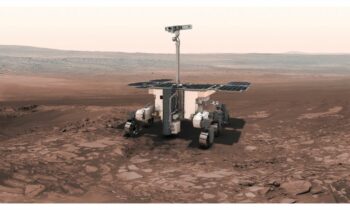A new airplane engine system requires a great deal of research and development. The desire to turn the aviation industry into one that is more sustainable is strong these days.
In an effort to develop sustainable aircraft technology, NASA has been conducting trials with a small-scale, operational jet engine.
The engine is kept in the Aero-Acoustic Propulsion Laboratory at NASA’s Glenn Research Center in Cleveland. It is referred to as the DGEN380 Aero-Propulsion Research Turbofan (DART). DART is not connected to the other NASA project of the same name that changed the course of an asteroid.
This technology is only 4.3 feet (1.3 meters) in size, tiny enough to sit on a tabletop. As a result, its size is almost half that of engines found in medium-sized aircraft.
The engine’s research coordinator at NASA Glenn, Dan Sutliff, stated, “DART’s small size makes it appealing. It’s a great way to explore new technology that hasn’t yet reached the level of a full-scale operation,”
Complete Working Engine
Without the expense of a full-sized jet engine test gear, researchers and engineers can now test novel engine components. NASA bought it in 2017 from Price Induction, a French company that was at the time known as Akira.
570 pounds of thrust may be produced by this small but mighty machine. Compressor, high-speed shaft, low-pressure turbine, and high-pressure turbine are the five main turbo mechanical components of the DGEN 380 engine.
The engine has a high bypass ratio as well. This suggests that a significant portion of incoming air is able to avoid the engine core due to DART’s design.
Commercial airplanes typically use larger engines that have a high bypass ratio. It’s interesting to note that this design brings DART closer to the larger engines found in commercial airplanes while also increasing fuel efficiency and producing less noise.
DART’s advanced characteristics make it the perfect platform for testing cutting-edge propulsion methods.
NASA Plans to Create Engines for Jets that use Less Fuel by 2030
By the 2030s, NASA engineers hope to have a new small-core, fuel-efficient jet engine for commercial aircraft thanks to the engine.
The next stage, if the technology’s current testing is successful, will probably be to put it through more extensive testing in bigger, more sophisticated testing facilities, like NASA’s wind tunnels.
“DART is a critical bridge between a design and a wind tunnel test. Technologies that work well here have a greater chance of achieving successful inclusion on future aircraft engines. The test rig helps NASA save resources and contribute to protecting our environment,” Sutliff stated in the press announcement.
Additionally, engine noise, engine protection coatings, sensors, and other instruments can all be tested on the DART.
DART has already helped NASA scientists learn how combining materials could help reduce engine noise. Additionally, this helps to create next-generation airplanes and reduce noise levels.



